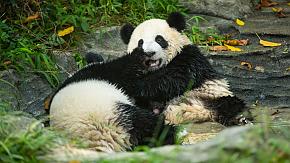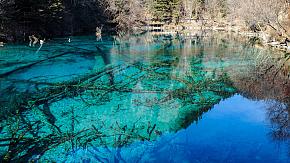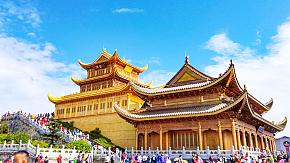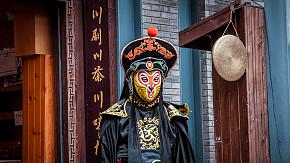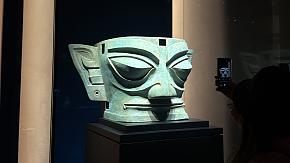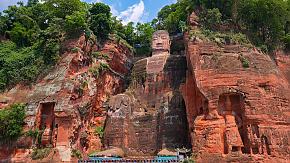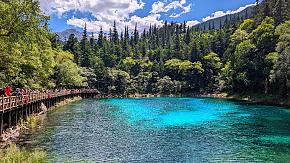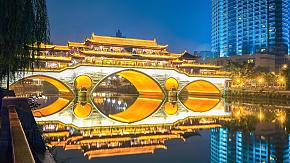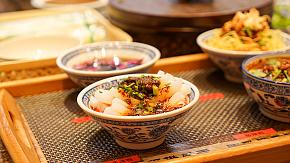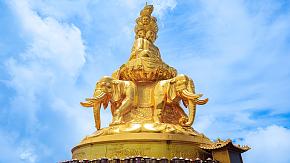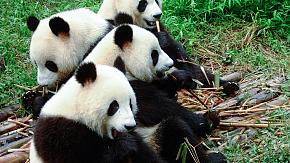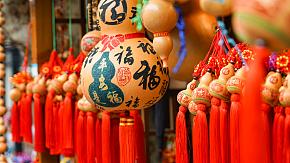Chengdu Travel Guide 2025: Top Places, How Long to Stay & When to Visit
Planning a trip to Chengdu? This vibrant city in southwest China is famous not only for its adorable giant pandas but also for its rich cultural atmosphere, delicious cuisine, and laid-back lifestyle. In this Chengdu travel guide, you'll find everything you need to know for a smooth and memorable visit - including top attractions, the best time to go, how many days to stay, how to get there, and practical travel tips to help you make the most of your journey.
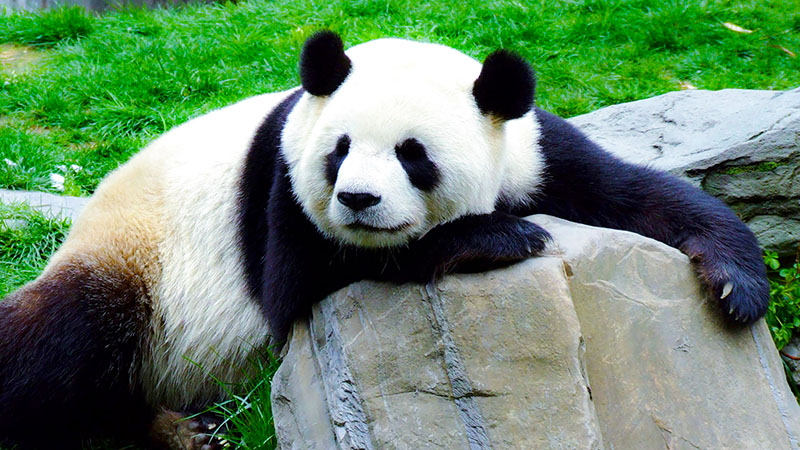 Meet pandas in Cengdu
Meet pandas in Cengdu
Best Time to Visit
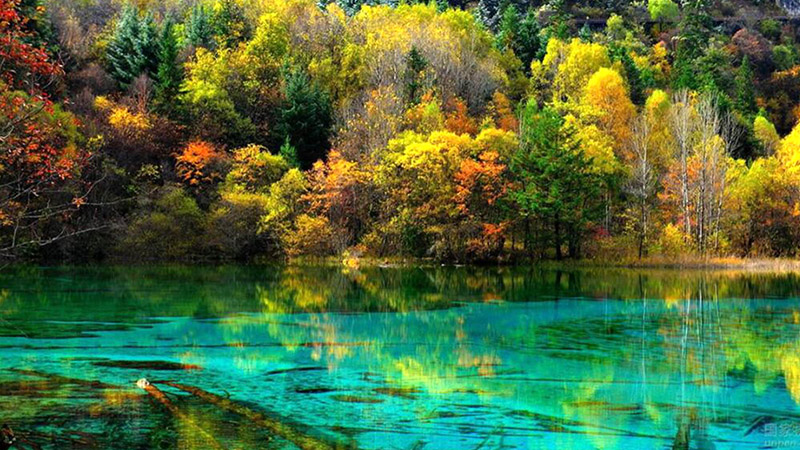 Jiuzhaigou Valley in autumn
Jiuzhaigou Valley in autumn
Generally speaking, spring (March to May) and autumn (September to November) are the best times to visit Chengdu, with average temperatures around 20-24°C. These months offer plenty of sunshine and relatively low rainfall, making the weather dry and ideal for outdoor activities and sightseeing.
If you plan to visit Chengdu during the summer holiday (June to August), be sure to pack waterproof and non-slip clothing, as the city experiences more frequent rain than other seasons during this period. Keep in mind that Chengdu can get quite hot in summer. If you're planning to see the pandas, try to avoid the hottest hours around noon, as pandas dislike the heat and tend to stay indoors during that time.
Top Attractions in or Around Chengdu
1. Chengdu Panda Base
 Chengdu Research Base of Giant Panda Breeding
Chengdu Research Base of Giant Panda Breeding
At the Chengdu Research Base of Giant Panda Breeding, you can observe over 150 giant pandas in a naturalistic setting. Apart from visiting mature pandas, other highlights include the Star Nursery Houses, where baby pandas are cared for, and the Red Panda Villa. The base features a sightseeing bus to help visitors navigate the expansive park. To protect the pandas, remember to turn off the flashlight and keep as quiet as possible.
By the way, if you're interested in the Panda Loving Program, a program providing a chance to take care of pandas during the daytime, consider visiting Dujiangyan Panda Base. Because Chengdu Panda Base does not offer this program for now.
2. Wenshu Temple
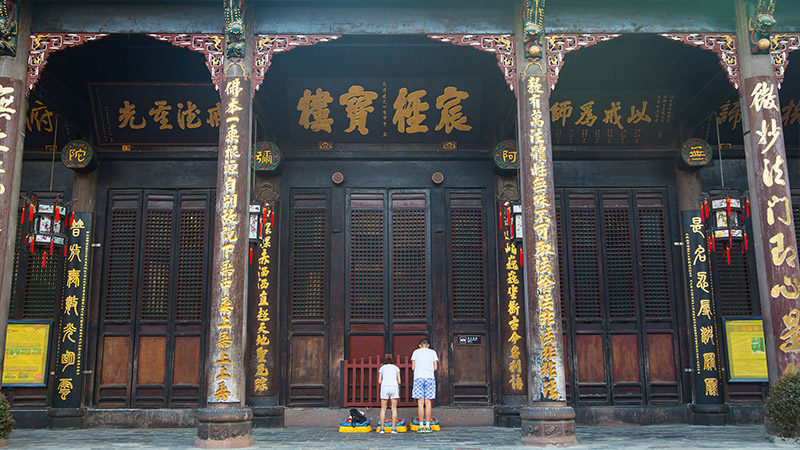 Wenshu Temple
Wenshu Temple
At Wenshu Temple, you can explore beautifully preserved ancient architecture, peaceful gardens, and atmospheric halls filled with the scent of incense. Highlights include the Grand Hall with its impressive Buddhist statues, the serene Sutra Library, and the charming tea house where locals gather. You'll also find intricate stone carvings, historic relics, and a centuries-old iron pagoda. In a word, Wenshu Temple is a great place to experience Chengdu's traditional culture and enjoy a moment of quiet reflection.
3. People's Park
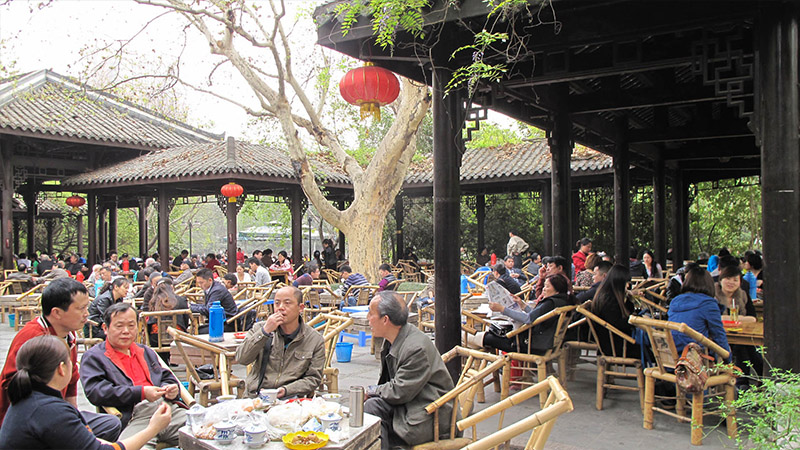 Local people have tea in People's Park
Local people have tea in People's Park
People's Park in Chengdu offers a lively mix of nature, culture, and local life. Stroll through bamboo groves, flowerbeds, and lotus-covered lakes for a peaceful escape. At Heming Teahouse, you can sip traditional tea while watching locals play mahjong - a unique local tradition. Or pay for a ticket for Sichuan face-changing opera, a show that requires performers to change their masks within the blink of an eye, at the teahouse.
For outdoor activities, consider visiting historical monuments like the Railway Protection Movement Monument in the park. Music and dancing often fill the air as residents gather for spontaneous performances.
4. Jiuzhaigou Valley
 Jiuzhaigou Valley in Sichuan Province
Jiuzhaigou Valley in Sichuan Province
In Jiuzhaigou Valley, visitors can see stunning turquoise lakes, multi-tiered waterfalls, and snow-capped peaks. Don't miss the Five Flower Lake, known for its vibrant colors and underwater tree trunks, and the Nuorilang Waterfall, one of the widest highland waterfalls in China. Mirror Lake offers peaceful reflections of surrounding mountains, while Long Lake impresses with its deep blue waters. The valley is home to Tibetan villages.
A gentle reminder: The ticket is for a one-day tour, and you can't stay the night in the Jiuzhaigou Valley site. There are hotels at the entrance of Jiuzhaigou Valley, covering Tibetan-themed hotels and high-end hotels like Sheraton Jiuzhaigou Resort.
5. Leshan Buddha
 Leshan Giant Buddha
Leshan Giant Buddha
At Leshan Giant Buddha, the main attraction is the world’s largest stone Buddha statue, carved into a cliff overlooking the confluence of three rivers. You can admire the statue’s impressive height, 71 meters, from both the top and bottom via a steep, scenic stairway. The Buddha’s serene expression and massive feet are particularly striking up close.
For a unique experience, taking a river cruise offers a panoramic view of the entire figure from the water. Nearby, Lingyun Temple provides cultural insights and a peaceful atmosphere. Hidden caves, ancient inscriptions, and lush greenery add to the site’s charm.
6. Emei Mountains
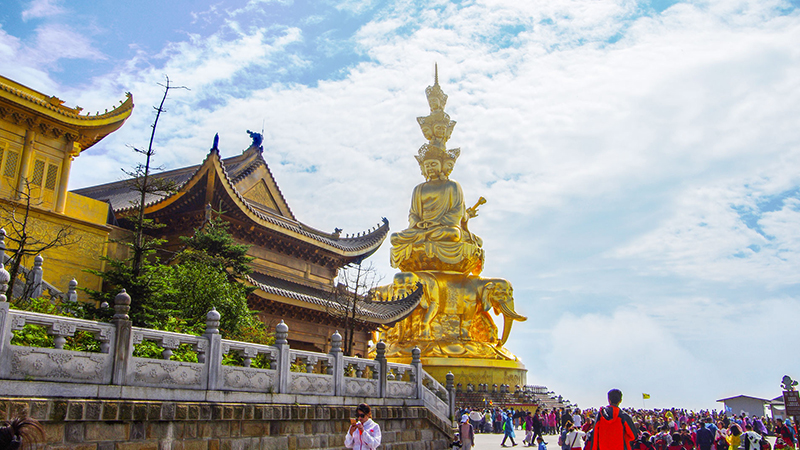 Golden Summit on Mount Emei
Golden Summit on Mount Emei
Mount Emei, one of China's Four Sacred Buddhist Mountains, offers stunning natural beauty and rich cultural heritage. Key highlights include the Golden Summit, where you can see the iconic 48-meter-tall golden statue of Samantabhadra and catch breathtaking sea-of-cloud views. Along the way, you'll find ancient temples like Baoguo Temple and Wannian Temple, lush forests, waterfalls, and diverse wildlife—including the famous Emei monkeys. The mountain's mix of spiritual atmosphere and scenic landscapes makes it a must-visit.
7. Sanxingdui Museum
 Huge bronze mask in Sanxingdui Museum
Huge bronze mask in Sanxingdui Museum
Sanxingdui Museum showcases mysterious artifacts from an ancient civilization dating back over 3,000 years. Highlights include large bronze masks with exaggerated features, intricate gold items, and a towering bronze tree unlike anything found elsewhere in China. The museum's two main exhibition halls reveal a lost culture distinct from the traditional Central Plains dynasties. Visitors can also see jade tools, pottery, and elephant tusks, all uncovered from sacrificial pits. Life-sized statues and artistic relics hint at sophisticated craftsmanship and spiritual beliefs. The museum's layout and modern displays create an immersive journey into a forgotten past.
How Many Days to Spend
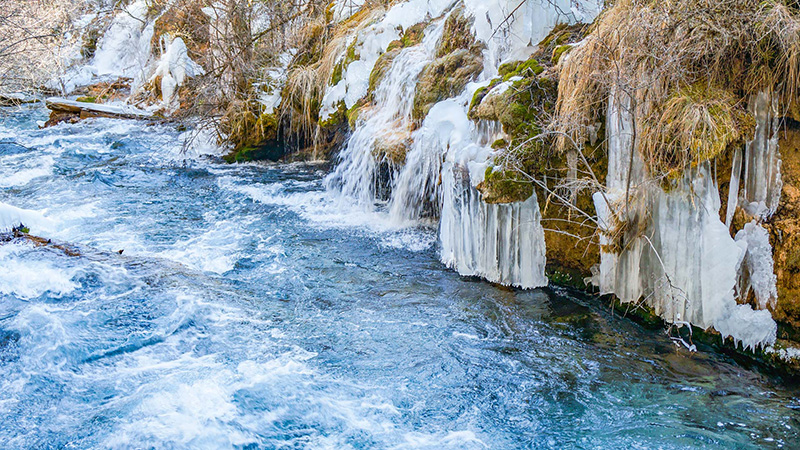 Beautiful waterfall in Jiuzhaigou Valley
Beautiful waterfall in Jiuzhaigou Valley
Typically, it takes about 1-2 days to explore major highlights within Chengdu city. It might feel a bit short, right? That's why we recommend visiting Chengdu's surrounding areas as well - all within about a 2-hour drive - such as Dujiangyan, Leshan, and Mount Emei.
Plus, if you're planning to visit colorful Jiuzhaigou, it might take half a day to get there from Chengdu. You will need to take a train to Huanglong Jiuzhai Staion first, which will take about 2.5 hours. Then, take a private car to Jiuzhaigou Valley.
For a more relaxed trip, it's best to spend one full day at each of the excursions. Altogether, a leisurely Chengdu and surrounding area itinerary would take 3 to 4 days. You can find detailed itineraries in the tours below.
How to Get to Chengdu
Some countries offer direct international flights to Chengdu, but the number of flights is relatively limited. In many cases, you'll need to transfer through major Chinese cities like Beijing, Shanghai, or Hong Kong before heading to Chengdu.
If you'd like to experience China's high-speed trains, which run at speeds of up to 300 km/h, you can also take a train from major entry cities to Chengdu. However, it usually takes at least 12 hours.
What to Eat in Chengdu
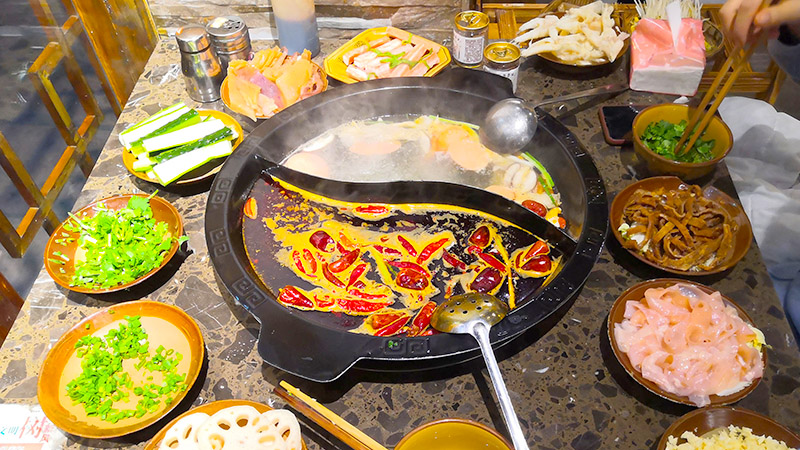 Sichuan hotpot
Sichuan hotpot
The tastes of Chengdu cuisine are mainly numbing and spicy, and it's famous across China - and even the world - for its Sichuan hotpot. Besides hotpot, you'll also notice the bright red color of chopped chilies in many dishes, such as "Shuizhu Pork" (boiled pork slices in chili oil), Mapo Tofu, Kung Pao Chicken, and Bang Bang Chicken.
If you don't like spicy food, or you enjoy it but can't handle too much heat, you can let the restaurant know - they can reduce or even skip the chilies for you.
Chengdu is a paradise for those with a sweet tooth. Besides savory dishes, you'll find plenty of sweet snacks and desserts, often featuring rich brown sugar fillings or sauces. Some of the most classic sweets include Brown Sugar Rice Cakes (Hongtang Ciba) and "Three Big Cannon Shots" (Sandapao). If you prefer something lighter and more refreshing, you can try Douhua (soft tofu pudding).
Where to Stay in Chengdu
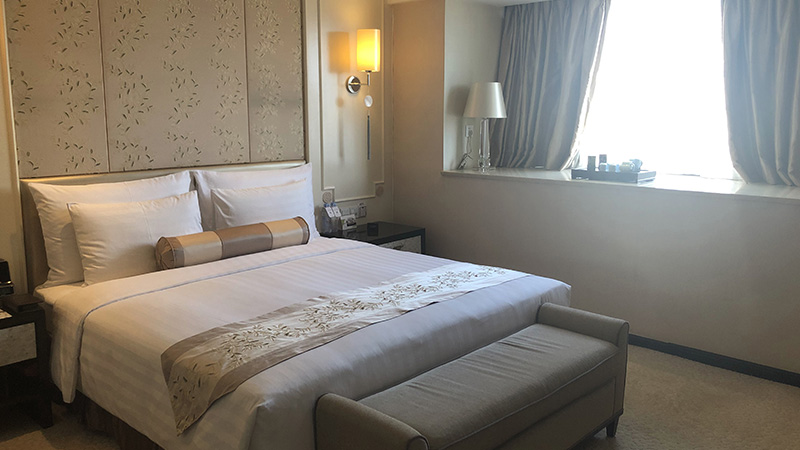 A luxury hotel in Chengdu
A luxury hotel in Chengdu
If your budget is sufficient, consider high-end hotels in Chengdu's central area. They are close to major attractions like Chunxi Road and Wenshu Monastery. For example, Dorsett Chengdu and Holiday Inn Chengdu Oriental Plaza are catering to both business and leisure travelers with well-equipped facilities, including breakfast and fitness centers.
Don't worry, the cost of living is relatively low in Chengdu when compared with Beijing or Shanghai, which means it won't cost a lot to stay in a 3-star hotel. With a limited budget, you can still have fun in Chengdu.
Travel Tips for Your Chengdu Tour
- Try local food, but ask for less spice if you're not used to it.
- Download a translation app, as English isn't widely spoken in China.
- Carry small change or use mobile payments. Many places accept WeChat Pay or Alipay, or you may pay via Apple Pay in major malls and restaurants.
- Join a private group tour. Chengdu has a unique cultural background, so having a tour guide can help you better immerse yourself in and understand the city. We can plan an exclusive Chengdu tour just for you - tailored to your preferences with personalized recommendations for attractions and hotels. Contact us now or write to trip@odynovotours.com for more information.
Quick Question
Related Posts You May Like
What Our Clients Say
"Great Customized Service", "Trip of A Lifetime", "Exceed All Expectations"
SUBSCRIBE TO WIN A FREE TOUR
Subscribe to our newsletter for a chance to win a free 7-day India tour! And more insider travel news, exclusive offers, and inspiration will be sent straight to your inbox.
